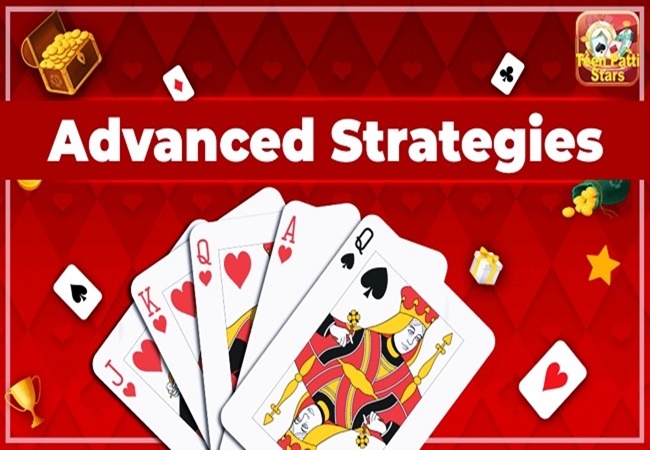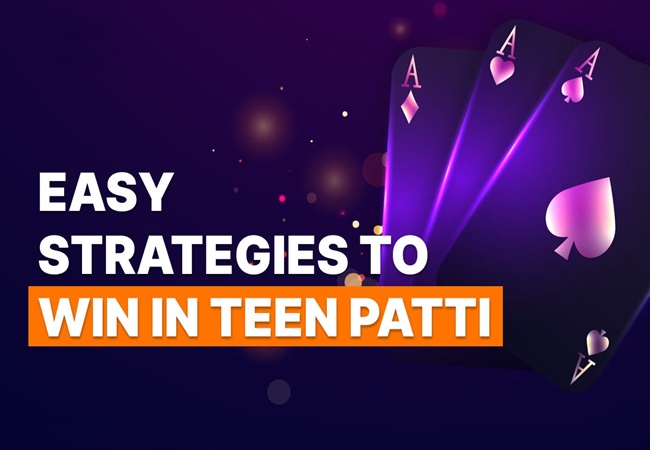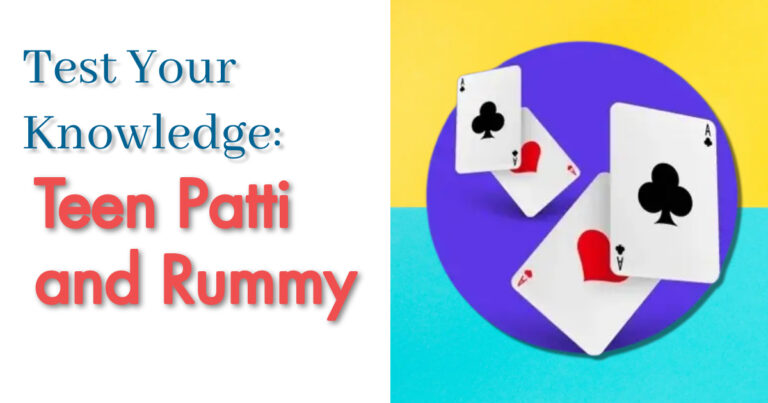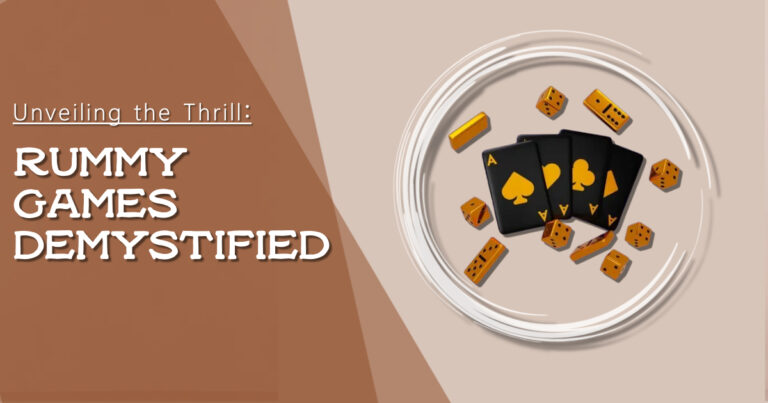When Should You Start Learning Advanced Strategies in Teen Patti
In the world of card games, strategies in Teen Patti make it stand out as a beloved classic. Originating in the Indian subcontinent, this three-card game has gained immense popularity worldwide. As beginners embark on their Teen Patti journey, they often wonder when they should delve into advanced strategies. This article aims to provide comprehensive guidance on the optimal timing for mastering advanced techniques in Teen Patti, rummy game.

Defining Teen Patti
Teen Patti, also known as Indian Poker, is a gambling card game that shares similarities with the English game of three-card brag. It involves betting and requires players to have a blend of skill, strategy, and luck to succeed.
Relevance and Importance
Understanding when to transition to advanced strategies in Teen Patti is crucial for players seeking to enhance their gameplay and increase their chances of winning. Mastery of advanced techniques can significantly elevate one’s performance and enjoyment of the game.
Types and Categories
Strategies in Teen Patti can be categorized into beginner, intermediate, and advanced levels. Beginners typically focus on understanding the basic rules and developing fundamental gameplay skills. Intermediate players start experimenting with more nuanced strategies, while advanced players employ sophisticated tactics to outwit their opponents.
Beginner Strategies
- Learning the rules of Teen Patti.
- Understanding hand rankings.
- Practicing basic betting strategies.
- Observing opponents’ behavior.
Intermediate Strategies
- Bluffing and semi-bluffing.
- Reading opponents’ tells.
- Adjusting betting patterns based on opponents’ tendencies.
- Managing bankroll effectively.
Advanced Strategies in Teen Patti
- Mastering probability and odds calculation.
- Utilizing game theory principles.
- Employing advanced bluffing techniques, such as the double and triple barrel.
- Executing advanced betting strategies, including floating and over-betting.

Symptoms and Signs
Signs that indicate readiness to advance to the next level of Teen Patti mastery include:
- Consistently winning against players of similar skill levels.
- Demonstrating a deep understanding of opponent psychology.
- Exhibiting proficiency in calculating pot odds and implied odds.
- Successfully executing advanced bluffing maneuvers.
Causes and Risk Factors
The decision to transition to advanced strategies in Teen Patti is influenced by various factors:
- Experience level: Players with extensive experience are more likely to grasp advanced concepts.
- Confidence: Confidence in one’s abilities plays a crucial role in adopting advanced strategies.
- Learning resources: Access to educational materials and mentorship can accelerate skill development.
- Risk tolerance: Players with a higher risk tolerance may be more inclined to experiment with advanced tactics.
Diagnosis and Tests
Determining readiness for advanced strategies in Teen Patti involves self-assessment and objective evaluation:
- Self-assessment: Reflecting on one’s strengths, weaknesses, and areas for improvement.
- Performance analysis: Reviewing past gameplay and identifying areas of excellence and opportunities for growth.
- Peer feedback: Seeking input from experienced players or mentors can provide valuable insights.
Treatment Options
Transitioning to advanced strategies in Teen Patti requires a structured approach:
- Study: Engage in intensive study of advanced concepts through books, online resources, and tutorials.
- Practice: Dedicate ample time to practice advanced techniques in low-stakes or free-play environments.
- Analysis: Analyze gameplay data, including hand histories, to identify areas for improvement and refinement.
- Feedback: Solicit feedback from peers or coaches to fine-tune strategy and decision-making.
Preventive Measures
To optimize the learning process and minimize setbacks, consider the following preventive measures:
- Set realistic goals: Establish achievable learning objectives and milestones to track progress.
- Manage emotions: Cultivate emotional resilience to cope with the inevitable ups and downs of learning.
- Stay disciplined: Maintain a disciplined approach to studying and practicing advanced strategies consistently.
- Stay humble: Adopt a growth mindset and remain open to learning from both successes and failures.
Personal Stories or Case Studies
To illustrate the journey of transitioning to advanced strategies in Teen Patti , consider the following case studies:
Case Study 1: Ravi’s Evolution
Ravi, a passionate Teen Patti enthusiast, started as a novice player with limited experience. Through dedication and perseverance, he gradually honed his skills and progressed to the intermediate level. With guidance from experienced mentors and relentless practice, Ravi eventually mastered advanced strategies and became a formidable opponent at the Teen Patti table.
Case Study 2: Priya’s Challenges
Priya, an ambitious Teen Patti player, sought to accelerate her learning curve by diving into advanced strategies prematurely. However, she soon realized that her foundation was not strong enough to support the complexities of advanced gameplay. Undeterred, Priya took a step back, focused on shoring up her fundamentals, and gradually worked her way up to the advanced level with patience and persistence.
Expert Insights
Seasoned Teen Patti players offer invaluable insights into the transition to advanced strategies:
- “The journey to mastering advanced strategies in Teen Patti requires a blend of discipline, perseverance, and humility. It’s essential to build a strong foundation of fundamental skills before delving into advanced concepts.” – Rahul, Teen Patti veteran.
- “Transitioning to advanced strategies in Teen Patti is akin to climbing a ladder. Each step requires careful planning, practice, and reflection. Embrace the process, stay patient, and celebrate every milestone along the way.” – Neha, experienced Teen Patti coach.
Conclusion
Knowing when to start learning advanced strategies in Teen Patti is a pivotal decision for aspiring players. By assessing their readiness, setting realistic goals, and embracing a structured learning approach, players can embark on a rewarding journey of skill development and mastery. Remember, the path to proficiency may be challenging, but the rewards of becoming a proficient Teen Patti player are well worth the effort.

5 FAQ’s
What is Teen Patti?
Teen Patti, also known as Indian Poker, is a popular card game originating from the Indian subcontinent. It involves betting and strategy and is played with three cards.
Why is it important to know when to start learning advanced Teen Patti strategies?
Understanding when to transition to advanced strategies is crucial for players seeking to enhance their gameplay and increase their chances of winning. Mastery of advanced techniques can significantly elevate one’s performance and enjoyment of the game.
How can I determine if I’m ready to learn advanced Teen Patti strategies?
Signs of readiness include consistent wins against similar skill levels, a deep understanding of opponent psychology, proficiency in odds calculation, and successful execution of basic bluffing maneuvers.
What are some preventive measures to optimize the learning process?
Set realistic goals, manage emotions, stay disciplined, and remain humble. It’s essential to establish achievable learning objectives, cultivate emotional resilience, maintain a disciplined approach to studying and practicing, and remain open to learning from both successes and failures.
What resources are available for players looking to learn advanced Teen Patti strategies?
Players can access a variety of resources, including books, online tutorials, and mentorship programs. Engaging in intensive study, dedicated practice, analysis of gameplay data, and seeking feedback from peers or coaches are essential components of the learning process.







